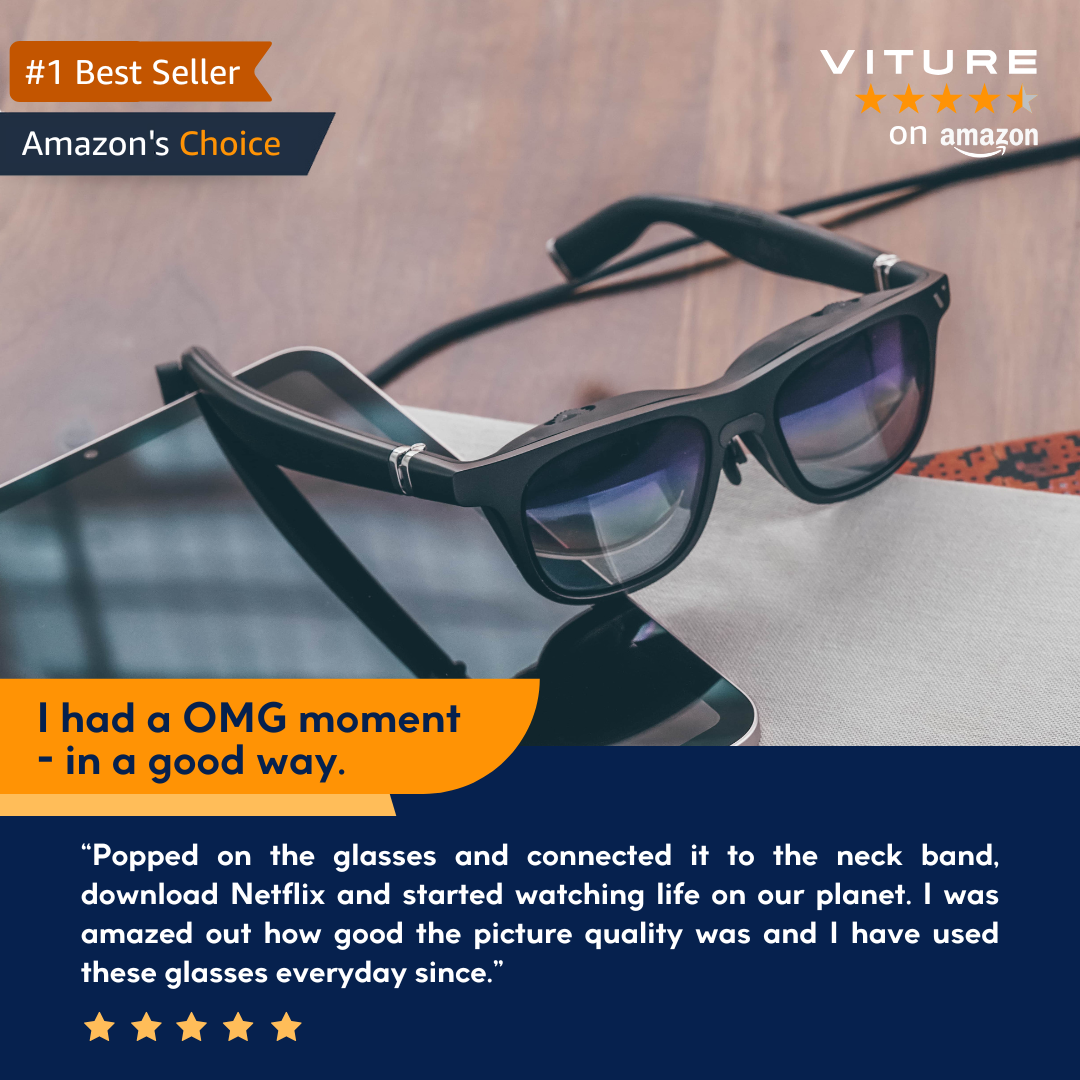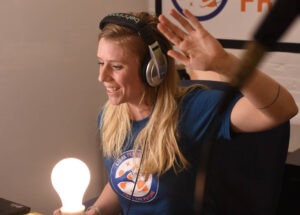The co-founder of top-shelf ergonomic keyboard maker ZSA Technologies talks about open source, the company’s user community, its relationships with its competition, and more.
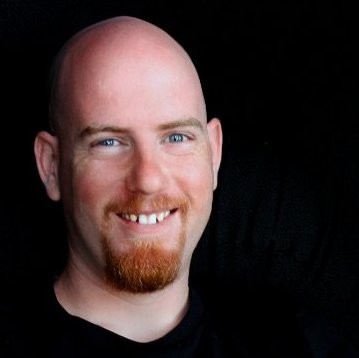
Erez Zuckerman is co-founder and CEO of ZSA Technologies, one of the oldest and largest manufacturers of the modern generation of ergonomic keyboards. For over a decade, he has presided over this rapidly expanding market niche, starting with ZSA’s early success with the Ergodox EZ. More recently, he has overseen the going development of the Voyager and Moonlander keyboards, selling over 150,00 boards in the last decade, all of them using QMK, the leading open source firmware for keyboards.
Ergonomic keyboards are not new. They have existed for over 30 years, although with more limited feature sets than modern ergonomic boards. However, ZSA’s success is an indication of ergonomic keyboards’ increasing popularity. Today, over a dozen companies offer ergonomic keyboards, using open source TMK, QMK, or Kaleidescope firmware. Many companies such as ZSA also have the community interaction more frequently found in open source projects than in businesses, encouraging users to post their custom layouts, and to release plans for accessories made with 3D printers.
In ZSA’s case, the increasing market can also be attributed to stylish portable designs, as well as the continual development of innovative features for customization and for flashing firmware, to say nothing of highly responsive technical support. In this interview, Zuckerman took the time to answer questions about ZSA, its business, and his own hands-on approach to management.
Bruce Byfield: How did you become a developer of ergonomic keyboards?
Erez Zuckerman: My background is in writing. I used to write for PC World — writing and software development. I was also a software developer for several years. I was always fascinated by keyboards. Like, back when I was a kid or a young teenager, my very first keyboard was the original Microsoft ergonomic keyboard. My dad got that for me just because it looked cool, and of course I broke that keyboard. Inevitably, I spilled a bunch of Coke or something on it.
That was my first time taking a keyboard apart. It was a membrane keyboard, so I kind of ended up stringing an impromptu clothesline across my room, taking the keyboard apart, wiping it down, and then hanging it up to dry. And then I put it back together and it worked. So, from a young age, I’ve been fascinated with both language and writing as well as actual keyboards. And that kind of led me here.
I don’t think of myself as a startup founder or a big entrepreneur. My mindset is more of a small business owner. And I really believe in bootstrapping. I think that there are sustainable ways to create businesses that are the right size and that are good and considerate for the people who work in those businesses as well as for the people who choose to support them. And that’s kind of a lofty ideal. It’s easy to say, but it takes a lot of work day to day as a small business owner. But I’m happy to do that work, and I feel a sense of meaning and satisfaction when I hear back from people that we make a real difference for them, and when I talk to the team and hear what they feel about working for ZSA.
Byfield: How did you become interested in ergonomic keyboards? Did you have a background in open source, or contribute to the development of QMK or any other projects?
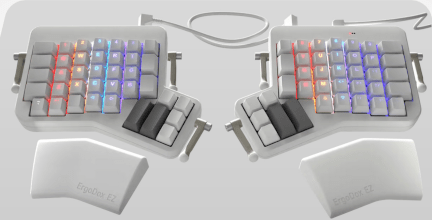
Zuckerman: Right around the time when I decided I wanted to make the Ergodox EZ, I had to figure out what firmware we want to run on it. At the time QMK was very young and I figured, OK, maybe let’s try this. I actually reached out to Jack Humbert, who is the original creator of the fork of QMK, and we really got along — we hit it off and we had some great conversations. C is not one of my languages, but I do have a background as a technical writer, so where I was able to help with QMK in the early days was with documentation. To this day, some of the QMK documentation has my words, which is very fun.
ZSA itself is one of the few companies, maybe even the only company, I’m not sure, actively sponsoring QMK development. We do this by paying Christopher Courtney (aka Drashna), who is our QMK liaison. He actually got into QMK after buying an Ergodox EZ and taught himself C, and he’s now one of the most active and respected contributors to the project. We financially support his work and make sure that he’s available to work on QMK as a whole. We don’t usually ask him to do anything specific, so he’s involved with the whole project, not just the parts that concern our keyboards.
Byfield: How was the feature set of the Ergodox EZ developed? Were there any existing models or inspirations?
Zuckerman: Well, first and foremost of course, the original Ergodox. At the time, the original Ergodox was available as a kit — a set of parts from Massdrop, which was later renamed Drop — and I wanted it, but it was not practical for me to buy a bunch of small parts and wait for months and then solder it myself. Then I figured I wasn’t the only one, so the motivation for the Ergodox EZ was absolutely, let’s make a prebuilt Ergodox.
I partnered with my amazing co-founder, Dmitry Slepov from Tibbo (our manufacturing partner to this day). He came up with what was essentially a redesign. If you look at the Ergodox EZ and the original Ergodox, of course the geometry is similar, but the internals are completely different. The way the case is put together is different. Plus we added the iconic legs as well as the Wing, which is what we call the wrist rest. But in terms of inspiration, absolutely the Ergodox EZ is the Ergodox reimagined from a hobbyist project into a real finished commercial product.

Byfield: How are the Ergodox EZ, Voyager and Moonlander different from each other? Is the Ergodox EZ in any sense obsolete? Any plans for another keyboard to round out ZSA’s product line?
Zuckerman: It’s kind of hard to summarize it in just a small answer, but basically you could say the Ergodox EZ is the original, and in terms of the options and everything, it’s pretty much the most customizable. You can really pick and choose what elements you want. As a result, it’s also our cheapest keyboard at the moment, our most affordable one.
The Voyager is our smallest one. It’s the only low profile board with compact key switches, such as might be found on a laptop. It’s our most recent one. It has many lessons from both the Ergodox and the Moonlander.
And the Moonlander, you could say, is the most modular one. We have a whole gallery of printables that people have created. You can remove the thumb cluster. You can block out some keys. There is a tripod mount. The Voyager also has a tripod mount, but the Moonlander has many, many features that make it a fantastic platform for customization.
The Ergodox EZ is in no way obsolete. We are actually investing in it heavily these days in order to upgrade it to use the same processor as we use on the Moonlander and the Voyager. This is something I hope to release within the coming months. We’ve been working on it for a long time now, putting a lot of effort there, so it’s definitely a heavily maintained and loved product. I think it has real longevity and I see a bright future for the Ergodox EZ.
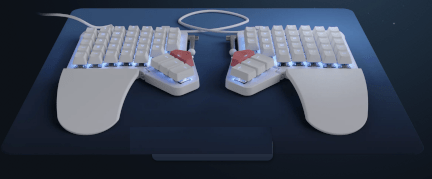
In terms of plans for other keyboards, nothing immediate. I am very interested these days in the scenario of using a keyboard as a control surface when working with creative applications like Photoshop or Ableton or Figma, and this is an area I’m actively exploring. I don’t know that it will result necessarily in a new keyboard, but we are constantly releasing interesting features that make our existing keyboards better for the people who already have them and for new customers.
Byfield: ZSA makes several decisions that other companies leave to the user, such as not being wireless, supplying only one leg per half, and limiting macro length. Why such choices?
Zuckerman: Let me start with macros. We are working on a major revamp of macros, and as part of this revamp, we will be increasing macro length up to eight characters.
That said, of course, ZSA is a highly opinionated company. We, or maybe I can even say I, have many opinions and I think on the whole that is a good thing. I think that companies sometimes err in one of two ways. Either they try to be everything for everyone or they over promise and then under deliver.
With ZSA, we target specific users. We make many decisions you didn’t even touch on. For example, the decision to not have resellers and not sell on Amazon, only sell directly on the website. We also have this decision that we don’t run any ads. We don’t advertise on social media. We don’t advertise on Google AdWords or on Facebook.
Byfield: Do such decisions reduce potential sales?
Zuckerman: Maybe they do, but they also mean that when somebody does find us and does invest in a ZSA keyboard, we have the resources to truly support that person. We are not stretched too thin. The object is not growth at all costs; the object is fostering enduring relationships with individuals. It’s making a difference for the people who choose to buy the keyboard. And so far, I feel it’s been working. That’s really how I measure success. It’s not really about explosive growth. And yes, that means having an opinion.
Byfield: How important are customer relations in ZSA’s business plan?
Zuckerman: They are absolutely essential. That is really the core of what we do, building relationships with people. This is why we put in so much time and effort and love into our newsletter every month. We actually get fan mail for the newsletter — like people replying and saying how much they enjoy it and people saying that it’s like the only newsletter they actually open. That is why I spend hours in the inbox every day. Even though nearly half the company is full-time support people, I spend hours in the inbox every day myself because I get to talk to people. It’s all about relationships.
That’s also why nearly half the company is high-level support people — we invest heavily in support.
Byfield: What do you admire in other ergonomic keyboard companies?
Zuckerman: Oh, a lot. Basically every other keyboard company. I mean, I know people from other companies, and from every person I have lots to learn.
Like in Dygma, I know Head Product Manager Manel Senis, and he’s just a lovely guy. He’s very nice and very pleasant to interact with, and I love Dygma’s transparency and their enthusiasm. And Jesse Vincent from Keyboardio is just great. We actually met face-to-face in Computex in Taiwan and he’s always fascinating to talk to. I love the positive atmosphere Keyboardio creates around their firmware and ecosystem, just a very pleasant environment. And Stephen Cheng from Moergo is just fascinating to talk with about business and his view as a serial inventor.
So really, pretty much every keyboard company you can think of, I think, in our little niche, the high end of the market. There’s lots to learn from every one of these. I think they’re all run by lovely people.
Byfield: ZSA is well-known for its enhancements like Keymapp’s Heat Map, which tracks the most used keys to assist custom key assignments, or the ability to assign up to four actions to a key using the TapDance macro. How are such enhancements developed? Are there any you’d like to see that ZSA hasn’t got around to yet, perhaps in the Moonlander Mark 2?
Zuckerman: What’s cool about these enhancements is that they mostly carry across the range. Meaning, if you had gotten a Moonlander three years ago or whatever, then those features would work on your keyboard, so you can really say that your ZSA keyboard is something that gets better over time. In general, most of these features are ideas from within the team.
We are, like I said, very heavy on relationships with customers, so we get a lot of qualitative input all the time. We just hear from people, we go in depth about what works for them and what doesn’t work for them, what they wish was different, and the line from having deep conversations to having detailed feature ideas is not a long line.
Bruce Byfield is a long-time user of ergonomic keyboards. He has contributed a keyboard layout for LibreOffice Writer on the Moonlander, which is available online.
Editor’s note: This interview has been lightly edited for readability.
Bruce Byfield has been involved in FOSS since 1999. He has published more than 2000 articles, and is the writer of “Designing with LibreOffice,” which is available as a free download here.




